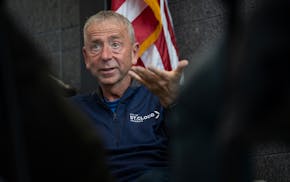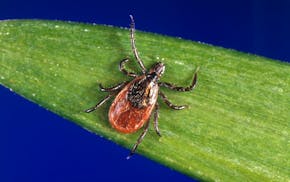Visitors to Minnesota might be afraid to eat here if they casually glanced at data comparing foodborne disease outbreaks by state over the years.
Texas, with a population five times that of Minnesota, has significantly fewer clusters of cases caused by salmonella and other pathogens that can infect us via meals and snacks. Iowa, Wisconsin and the Dakotas also record far fewer foodborne outbreaks.
It would be wrong, however, to conclude that Minnesotans are less hygienic in our kitchens or that foodborne bugs abound here in greater quantities. The reality is that the state's public health professionals are world-class when it comes to detecting outbreaks. Illness clusters that stay under the radar elsewhere are picked up here and are more likely to be traced to the origin.
That's good context in which to consider the re-energized investigation and contentious debate over COVID-19's origins. While germs making the leap from animals to humans is a more traditional path for diseases, the presence of a high-level virology institute in Wuhan, China, has long fueled concerns about whether this lab potentially played a role.
The city is considered the COVID pandemic's epicenter. Could a coronavirus under study at the lab have escaped into the surroundings and spread?
Minnesota's in-house foodborne detection expertise is a reminder that caution is warranted in drawing conclusions about the Wuhan lab's location. Proximity doesn't equal causation. The COVID virus may well have been circulating in other areas without an expert lab nearby. The Wuhan scientists could simply have been the first to detect it or sound the alarm.
A World Health Organization team and a review published in Nature Medicine concluded animal-to-human transmission is most likely. Still, definitive answers about COVID's origins remain elusive more than a year and a half after this global public health crisis began.
More specifically, the animals that harbored this virus before it crossed into humans have not been conclusively determined. While that's not unusual for emerging diseases — Ebola burst onto the scene decades ago and its zoonotic origins remain under study — a deep investigation, with results and methods shared with the public, is essential.
That will help prevent another pandemic and reassure a public trying to follow an increasingly technical debate where "furin cleavage" and the laws of physics have been both raised by some and dismissed by others in the argument for lab involvement. Concerns about the level of access China has given to investigators have also undermined public confidence.
In the wake of ongoing questions and debate, President Joe Biden on May 26 sensibly ordered U.S. intelligence agencies to do a deep review of what's now known as the "lab leak" hypothesis. That move follows a May 23 Wall Street Journal story reporting that three scientists from the Wuhan institute became ill enough to seek hospital care in November 2019. The newspaper's source is "a previously undisclosed U.S. intelligence report." Information that the article is missing? Proof that these scientists had COVID. And, if they did, that they got COVID in the lab vs. outside it.
The lab leak hypothesis isn't dismissed by leading scientists such as Minnesota's Michael Osterholm and the University of Iowa's Dr. Stan Perlman. But neither do they embrace it, and they both make clear that "plausible" does not equal "probable."
Perlman is a highly respected researcher who has studied coronaviruses for almost 40 years. In a recent interview with Salon, he methodically sorted through the lab leak debate. Contacted by an editorial writer, Perlman said he's among the scientists who think there's a 90% chance that COVID emerged naturally, and a 10% chance of a lab leak.
Newly minted infectious disease doctors often hear the saying "When you hear hoofbeats, think horses, not zebras." In other words, consider common causes of illness first, not exotic ones. That's good advice, but the debate over COVID's origins illustrates that zebras still need to be ruled out. Those who reminded the nation of that early on, such as Republican U.S. Sen. Tom Cotton, were right to raise questions and should be heeded.

Kudos to St. Cloud's longtime mayor
Readers Write: Ethnic studies curriculum, public notice laws, student protests


